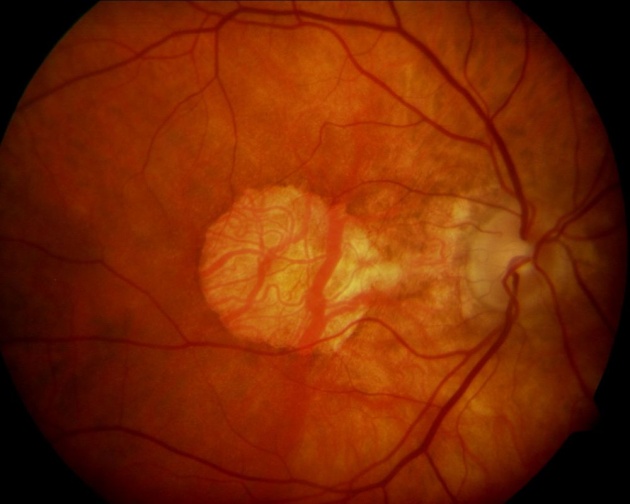Animals fed on the diet consisting only of purified carbohydrates, fats, proteins, minerals, and water will lose weight and develop certain deficiency diseases. Something else must be administered to sustain normal life. The additional substances required are called vitamins.
The name vitamin was originally vitamin because the first one found was an amine, hence the name vital amine, or vitamin. Subsequent studies of other substances showed that they were not all amines, so the "e" was dropped.
Courtesy of the video: Professional Supplement Center via Youtube
Vitamins are similar to hormones in many ways. Vitamins and hormones are carried by the bloodstream to the various parts of the body where they are needed. Vitamins and hormones are required in the body where they are needed only in extremely small amounts. Neither vitamins nor hormones furnish energy by themselves, although vitamins function with certain enzymes to control energy changes in the body. One important difference between vitamins and hormones is the most vitamins must be supplied in the diet, whereas hormones are synthesized by the body.
Classification by Solubility
Vitamins are classified as either water-soluble or fat-soluble. In humans there are 13 vitamins: 4 fat-soluble (A, D, E, and K) and 9 water-soluble (8 B vitamins and vitamin C). Water-soluble vitamins dissolve easily in water and, in general, are readily excreted from the body, to the degree that urinary output is a strong predictor of vitamin consumption.[20]Because they are not as readily stored, more consistent intake is important.[21] Fat-soluble vitamins are absorbed through the intestinal tract with the help of lipids (fats). Vitamins A and D can accumulate in the body, which can result in dangerous hypervitaminosis. Fat-soluble vitamin deficiency due to malabsorption is of particular significance in cystic fibrosis.
VITAMIN A
According to the study, 99 percent out of 100 in the USA have Age Related Muscular Degeneration. It is an eye disease that affects to mostly aged people at the age of 60 where there is macula deterioration. Macula enables us to see clearly in everything we do as it is behind our retina. However, it can also affect be a hereditary trait that chooses no specific adult age. It may further interfere a patient with hypertension, cardiovascular disease, and blue eyes. Vitamin A is prescribed for an immediate treatment.
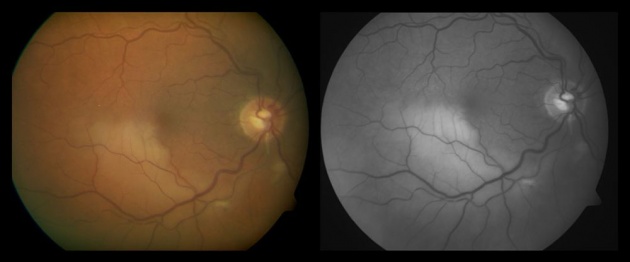

The patient is diagnosed with Branch Retinal Artery Occlusion, an eye problem that stops the tiny retina arteries and the layered nerves that allow a person to sense the lights.
Courtesy of the image: http://www.retinamaine.com/patient-education.html
Source
Vitamin A is found in fish liver oils, butter, milk, and to a small extent in kidneys, fat, and muscle meats, the reason why it belongs to a fat-soluble vitamins group. The precursor of vitamin A (the substance from which vitamin A can be made) is called provitamin A and is found in yellow fruits and vegetables such as peaches, apricots, sweet potatoes, carrots, tomatoes, and in green leafy vegetables.
Properties

Vitamin A is soluble in fats but not in the water. It is stable to heat, acid, and alkali but is destroyed by oxidation. Ordinary cooking does not destroy vitamin A. The vitamin A present in butter is destroyed when the butter turns rancid (becomes oxidized).
Courtesy of the image:https://www.npr.org/sections/thesalt/2014/10/09/353510171/smen-is-moroccos-funky-fermented-butter-that-lasts-for-years
Daily Requirement
The recommended daily dosages of fat-soluble vitamin A for the normal adult male and female are 1000 and 800 retinol equivalents (5000 and 4000 IU), respectively. The daily requirements of vitamin A have increased 1000 retinol equivalents (5000 IU) during pregnancy and to 1300 retinol equivalents (2000 to 3300 IU) daily.
Vitamin A is necessary for normal growth and development, reproduction, mucus, and lactation. It is necessary for the synthesis of the membrane around the lysosomes and the mitochondria and acts to regulate membrane permeability. Vitamin A plays an important role in the functioning of the retina.
Vitamin A plays a role in maintaining the integrity of the epithelial tissues, particularly because of its antioxidant properties. Some evidence has shown that there is a reverse relationship between the vitamin A content of the diet and the risk of some types of cancer that occur in the epithelial tissues.
Retinol is bound to cellular retinol-binding protein and is transported to other parts of the cell where it can be bind with nuclear proteins. It is believed that this latter binding is involved in the control of the expression of certain genes. The requirement of vitamin A fat-soluble for normal reproduction may be due in part to this function.
The effect in Deficiency
Vitamin A was discovered by the observation that certain animals did not grow on a diet low in some animals fats. However, this effect on growth is characterized by a lack of vitamins as well. A lack of vitamin A causes a shrinking and hardening of the epithelial tissues of the membrane in the eyes, digestive tract, respiratory tract, and genitourinary tract. Such hardening is called keratinization.
When keratinization occurs in the lining of the respiratory tract, the patient is more likely to suffer from colds, pneumonia, and other respiratory infections because of the drying of the membranes.
When keratinization occurs in the eyes, the tear ducts become keratinized and are no longer able to secrete tears to wash the eyes. When this occurs, bacteria are able to attack the corneal tissues of the eyes, producing an infection called xerophthalmia. In this disease, the cornea becomes cloudy and does not allow light to pass through, so sight is lost permanently.
An early symptom of the lack of fat-soluble vitamin A is nyctalopia or night blindness. A person with night blindness cannot see very well in dim light because of lack of visual purple (rhodopsin) in the retina of the eyes. This pigment is acted on and changed by light and is then regenerated in the presence of the retinal, an oxidized form of Vitamin A. If there is lack of deficiency of vitamin A, the rhodopsin is regenerated very slowly; thus, there is an impairment in the vision at night.
Effect of Excess
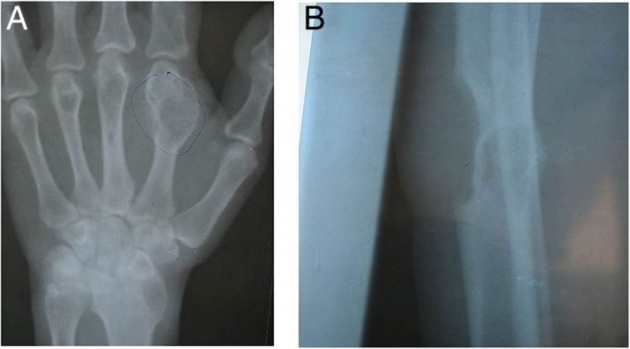
The patient is diagnosed with brown tumor on the tibia caused by the excess use of vitamin A but lacking of vitamin D and exposure to sunlight. Anyone can experience this with hyperparathyroidism. In the illustration B, metacarpal bone experienced vitamin D deficiency.
Courtesy of the image: https://casereports.bmj.com/content/2015/bcr-2014-207722
Hypervitaminoses A, intake of vitamin A far in excess of normal daily requirements, has such early symptoms as irritability, loss of appetite, fatigue, and itching. These symptoms usually disappear within a week after withdrawal of the vitamin.
Acute cases of hypervitaminoses A have been observed following ingestion of polar bear liver, which contains up to 3500 IU of vitamin A per gram. Symptoms are drowsiness, sluggishness, vomiting, severe headache, and generalized peeling of the skin after 24 hours. Membranes have increased permeability and decreased stability, leading to mitochondrial swelling, lysosomal rapture, and eventually death.
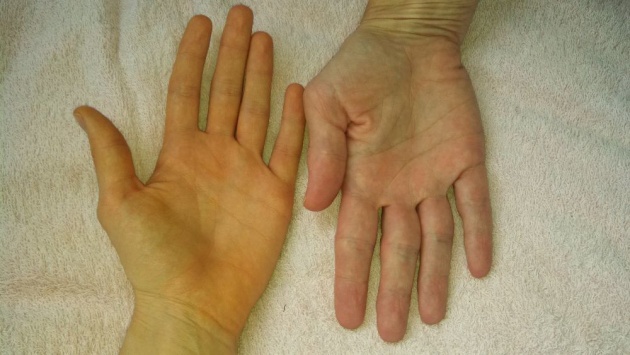
Eating a great many carrots daily may result in carotenosis, a benign condition characterized by yellowing of the skin. The left palm has this illness.
Courtesy of the image: https://sunnysidehealthcenter.com/2016/02/25/carotenoids-health/carotenosis-hand/
Storage and Absorption fat soluble vitamin A is stored in the liver until it is needed. Mother's milk contains 10 to 100 times as much as vitamin A as does ordinary milk. Zinc is necessary for vitamin A to be mobilized from the liver, indicating that vitamin A metabolism may be adversely affected by a zinc deficiency.
Mineral oil should never be taken immediately before or after a meal because it coats the mucosa and interferes with the absorption of carotenes.
Since vitamin A is fat- soluble, it cannot be absorbed from the intestinal tract without the presence of bile. Any interference with the flow of bile to the intestines will also cause a deficiency of the fat-soluble vitamin.
VITAMIN D
The patient in illustration A is the one who wears gown. The report discovered that the patient was diagnosed with Tumor-induced *Osteomalacia caused by Vitamin D deficiency. Shortening the height is one of the symptoms. The patient in illustration B has kyphosis. He was also diagnosed with pectrus carinatum, while the illustration C and D is diagnosed with hyperparathyroidism that was not treated for a long time.
Courtesy of the image: https://erc.bioscientifica.com/view/journals/erc/18/3/R53.xml
Source
VItamin D is sometimes called "the sunshine vitamin." The richest sources of vitamin D are oils from such fish as cod or halibut and the flesh of such oily fish as sardines, salmon, and mackerel. Milk is not a very good source of vitamin D, although its vitamin D content can be increased by irradiation with ultraviolet light. The vitamin D content of the body can be increased by exposure of the skin to ultraviolet rays from the sun. Care must be taken to avoid overexposure and consequent sunburn.
Vitamin D3 is similar to vitamin D2, the difference being in the structure of the side chain. Vitamin D3 is made by the irritation of the 7-dehydrocholesterol, so it is frequently called "activated 7-dehydrocholesterol."
Ergosterol, the precursor of vitamin D2 fat-soluble, occurs in plants, whereas 7-dehydrocholesterol, the precursor of vitamin D3, occurs in the skin of humans and animals.
7- dehydrocholesterol in the skin is isomerized to vitamin D3 under the influence of ultraviolet light.
Vitamin D fat-soluble must acquire two hydroxyl groups to be biologically active. The first hydroxyl group is added to the liver and the second in the kidneys.
The same reactions occur with vitamin D2. Patients who cannot convert vitamin D fat-soluble to its active form, because of the liver or kidney disease, often develop *osteomalacia, osteoporosis, or other bone diseases. Such patients can now be treated with synthetic active-form of vitamin D.
Properties
The d-vitamins are soluble in fats and insoluble in water. They are stable to heat, resistant to oxidation, and unaffected by cooking. Vitamin D2 has a greater potency in humans that vitamin D3, whereas the reverse is true in chickens.
Daily Requirement
The daily requirement for children is 400 IU. Daily requirements for adults are 200 to 400 IU. One international of vitamin D is defined as the biologic activity of 0.025 ugs of cholesterol.
Physiologic Action
This principal action of vitamin D is to increase absorption of calcium and phosphorous from the small intestine. It also increases the release of calcium and phosphate in the bones and is necessary for normal growth and development. Vitamin D fat-soluble is required for the proper activity of the parathyroid hormone and so is used therapeutically in the treatment of hypoparathyroidism. A lack of vitamin D may cause hypocalcemia and hypophosphatemia.
Effect of Deficiency
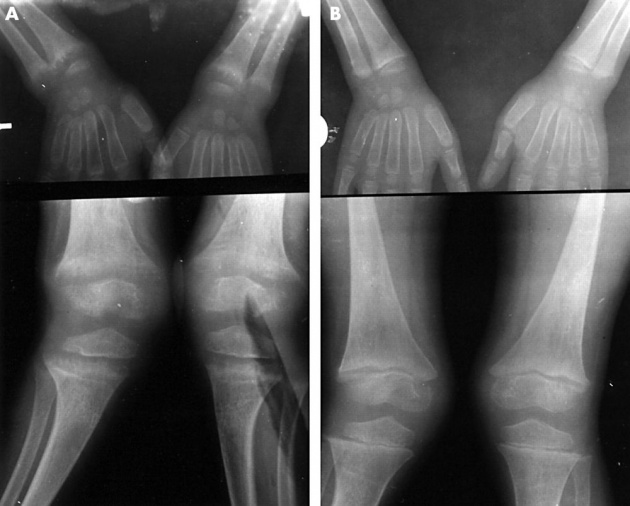
In the illustration is the comparison of the untreated rickets and treated. The abnormal bone experienced bone softening that leads to such illness. This is due to vitamin D deficiency. Not just the d-vitamin, the bones have lacking supplies of calcium and phosphorus. A figure is untreated. For six months of the therapy, normal bones in figure B is the X-ray result of the treatment.
Courtesy of the image: https://adc.bmj.com/content/88/9/812
Rickets, a disease primarily in infancy and childhood, was previously thought to be a deficiency of vitamin D fat-soluble. This disease is now believed to be a lack of sunshine on the skin. Why? Because sunshine is necessary for the synthesis of calciferol in the skin.
Rickets is characterized by the inability to deposit calcium phosphate in the bones. The bones become soft and pliable; they bend and become deformed. The joints become enlarged, and the ribs become beaded. The known or beaded appearance of the ribs is called rachitic rosary. A child who has rickets does not grow. He or she develops such symptoms as nervousness, irritability, a bulging abdomen, loss of weight, loss of appetite, anemia, and delayed development of the teeth. Injection of small amounts of calciferol, or one of its derivatives, or inadequate exposure to sunlight can prevent or cure rickets.
A diet low in phosphorous and vitamin D may produce *osteomalacia or adult rickets. Since adult rickets is a rare condition, this suggests that adults need less vitamin D fat-soluble than children do. When an adult develops rickets, there is no bulging of the joints since the growth of bones in an adult is already complete. There is, however, some softening of the bones, with accompanying deformities. This disease occurs most often in women after repeated pregnancies during which there was a deficiency of vitamin D fat-soluble.
A lack of calcium and vitamin D fat-soluble in the diet can cause *osteoporosis in the adult. This disease, like osteomalacia, is characterized by decalcification and too much softening of the bones but to a much greater extent.
Effects of Excess
Hypervitaminosis D may show such early symptoms as weakness, lassitude, fatigue, nausea, vomiting, and diarrhea, of which are associated with hypercalcemia. Later symptoms include calcification of soft tissue, including the kidneys and the lungs. Treatment of hypervitaminoses D consists of immediate withdrawal of the vitamin, increased fluid intake, a diet low in calcium, and the administration of glucocorticoids.
VITAMIN E
In the illustration is the patient diagnosed with muscle dystrophy. One of the reasons why a person can have this neurogenic problem is due to vitamin E deficiency. The doctor assisted the patient to undergo the bicycling therapy good for his muscles that shrink.
Courtesy of the image: http://ux.nationwidechildrens.org/bike-game/
Source
Vitamin E is also a fat-soluble as it can be found in milk, eggs, fish, muscle meats, cereals, leafy vegetables such as lettuce, spinach, and parsley, and plant oils such as cottonseed oil, corn oil. and peanut oil. Wheat germ oil is particularly rich in vitamin E.
Properties
Vitamin E plays an important role in selenium metabolism. Selenium is required for pancreatic function. This includes absorption of lipids along with vitamin E. Selenium is also present in the enzyme glutathione peroxidase, which helps destroys peroxides and reduces the requirement of vitamin E for maintenance of membranes. Selenium also aids in the retention of vitamin E in plasma lipoprotein.
Conversely, vitamin E fat-soluble reduces selenium requirement in the body by preventing the loss of that element.
Vitamin E fat- soluble is required in higher animals such as cattle and poultry for fertility. The name tocopherol is derived from the Greek tokos meaning "childbirth" and pherein meaning to "bear."
Daily Requirement The recommended daily requirement of vitamin E fat-soluble is 10 IU for adult men and 1 IU for adult women.
Effect of Deficiency
Some animals on a vitamin E-deficient diet develops muscular dystrophy, resulting in paralysis. Administration of vitamin E helps these animals overcome such effects. Vitamin E has not been found effective in treating muscular dystrophy in humans.
Vitamin E as a Biological Antioxidant
In dogs antioxidants, including vitamin E, can achieve sustained increases in circulating levels of antioxidants that exert a protective effect by decreasing in DNA damage. This leads to improved immunological performance (Heaton et al., 2002). Free-radical damage has been associated with a variety of degenerative disorders and the aging process in general (Jewell et al., 2000; Skoumalova et al., 2003). Disorders where vitamin E has been beneficial to dogs and or cats include chronic hepatitis (Honeckman, 2003), renal failure (Yu and Paetau-Robinson, 2006; Varzi et al., 2007), congestive heart failure (Freeman et al., 2005) and immune-mediated hemolytic anemia (Pesillo et al., 2004).
-DSM-
Daily Requirement
The daily requirement for vitamin E fat-soluble increases with a greater intake of polyunsaturated fat. In addition, exposure to oxygen is an oxygen tent, or intake of mineral oils can lead to a deficiency of vitamin E and eventually to neurologic disorders.
Severely absorptions of fats in the intestine can cause vitamin E deficiency in humans. The symptoms of the disease are a muscular weakness, creatinuria, and fragile red blood cells.
There appears to be a relationship between vitamins A and E. Vitamin E may help in the absorption storage, and utilization of vitamin A. Vitamin E also appears to offer protection against large overdoses of vitamin A. No definite side effects of large doses of vitamin E are known.
VITAMIN K
The baby is injected 20 thousand times dosage of vitamin K as daily requirement. The vitamins flow to the bloodstream as needed for immunity. However, it contains a Benzyl alcohol that is harmful to infant's sensitive body.
Courtesy of the image: https://www.amoils.com/health-blog/dilemma-vitamin-k-shots-newborn/
Source
Vitamin K fat-soluble is found in the green leafy tissues of such plants such as spinach, cabbage, and alfalfa. Vitamin K is also found in putrified fish meal, liver eggs, and cheese. Fruits contain very little of vitamin K.
Properties
The K vitamins are soluble in fats and insoluble in water. They are stable to heat but are destroyed in acidic and alkaline solutions. They are also unstable to lights and oxidizing agents.
Daily Requirement
The daily requirement of vitamin K fat-soluble is 70 to 80 g for a man and 55 to 65 for women. The average diet supplies sufficient vitamin K; in addition, intestinal bacteria are able to synthesize this vitamin for their host.
Effect of Deficiency
Deficiency of vitamin K fat-soluble will occur only as a result of prolonged use of broad-spectrum antibiotic coupled with a diet lacking or low in vitamin K. Vitamin K deficiency does occurs in breast-feed infants because they do not have intestinal bacteria and because breast milk is a poor source of vitamin K. Vitamin K is usually given as a food supplement during the first five months after birth. Some infants are born with a deficiency of prothrombin and are subject to bleeding. Other infants have no ability to manufacture vitamin K in the intestine. Without proper care, such infants may die of a brain hemorrhage. This condition can be alleviated by administering vitamin K to the mother before delivery or to the infant shortly after birth.
A deficiency of vitamin K fat-soluble may also occur when fat absorption is impaired, as in biliary or pancreatic disease or in the atrophy of intestinal mucosa.
Vitamin K fat-soluble is absorbed from the small intestine with the help of the bile. In conditions in which bile does not enter into the small intestine, such as in obstructive jaundice, vitamin K is not absorbed. This condition leads to a tendency to bleed for a long period of time after an injury or when an individual is undergoing surgery. This effect can be overcome by administering both bile and vitamin K to the patient.
Vitamin K is also used therapeutically as an antidote for anticoagulant drugs such as dicoumarol.
Effect of Excess
Large doses of vitamin K can cause hemolysis in infants and aggravate hyperbilirubinemia.
Courtesy of the video: WellBeingGPGS via YOUTUBE
Sources
- https://extension.colostate.edu/topic-areas/nutrition-food-safety-health/fat-soluble-vitamins-a-d-e-and-k-9-315/
- https://www.medicalnewstoday.com/articles/320310.php
- https://www.thelancet.com/journals/lancet/article/PIIS0140-6736(01)15696-5/fulltext
****************************************************
All rights reserved 2019. No part of this content
may be reproduced without special credits
from the publishers of Extension Colostate, Medical News Today, and The Lancet.

